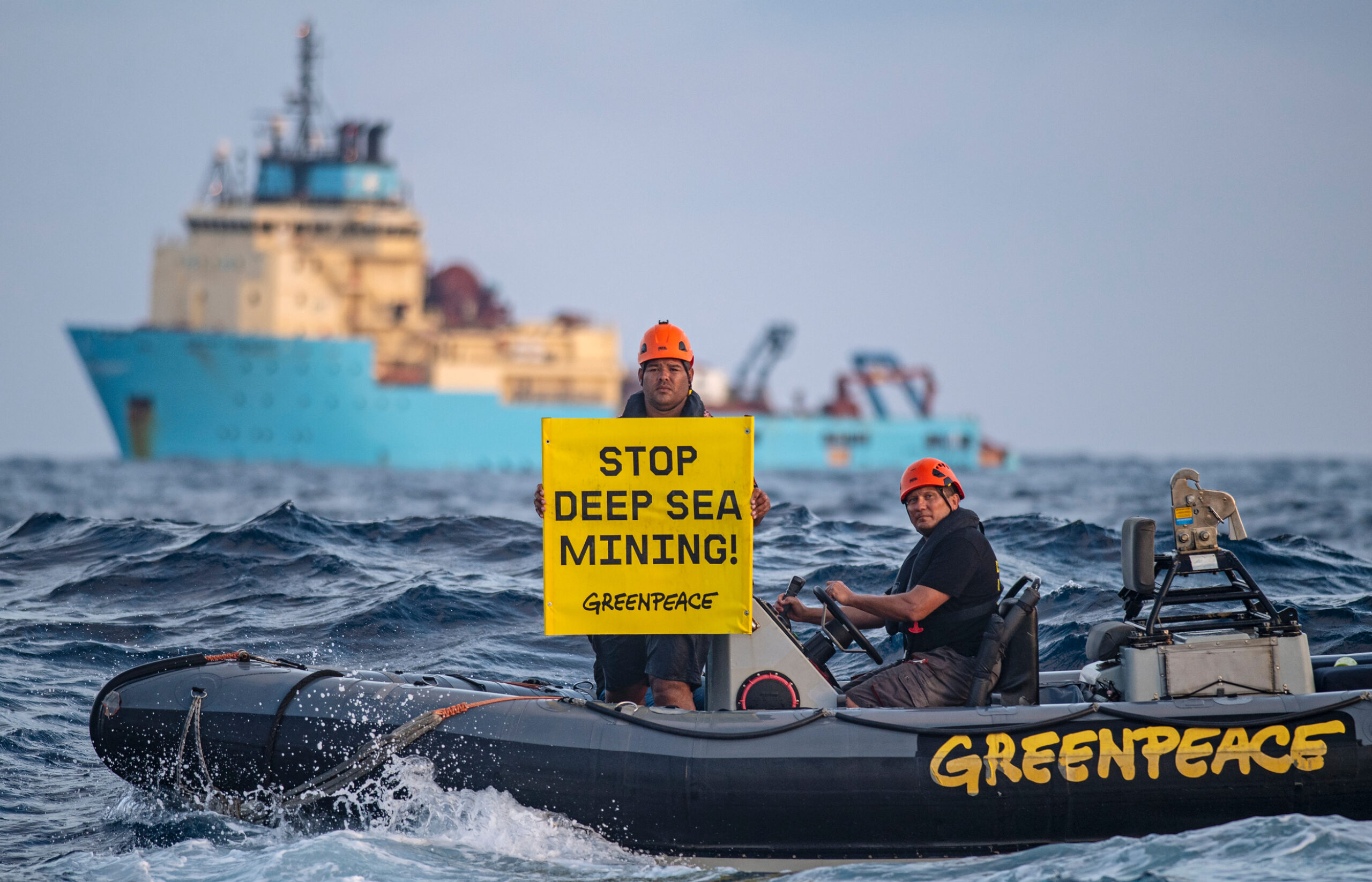
- Press Release
UK Government secretly approves transfer of exploration licences to a corporation while publicly backing a pause on deep sea mining
The UK government will continue to sponsor two deep sea mining exploration licences, despite publicly supporting a moratorium, according to a press release from mining company Glomar Minerals.
UK Seabed Resources Ltd (UKSRL) holds two deep sea mining exploration licences in the Clarion Clipperton Zone of the Pacific Ocean, covering 133,000km2 – an area larger than England. The licences have been sponsored by the UK government since 2013.
Earlier this year, UKSRL’s parent company, Norwegian firm Loke Marine Minerals, collapsed, casting doubt over the future of the licences and the UK’s role in sponsoring them. Greenpeace called on the government to reassess its involvement and listen to the growing body of scientific evidence warning against deep sea mining.
Instead, UKSRL was acquired from Loke’s bankruptcy estate by Glomar Minerals, a newly formed UK company comprising much of the same management team as its predecessor. Glomar has now confirmed that, under its ownership, the UK government will continue to sponsor UKSRL and its two exploration licences, which expire in 2028.
Responding to the news, Chris Thorne, Senior Oceans Campaigner at Greenpeace UK, said:
“When Loke collapsed earlier this year, it should have been a moment for the government to step back, listen to the growing bank of scientific evidence against deep sea mining, and reassess its sponsorship of the licences.
“But while the government publicly supports a pause on this dangerous industry, behind the scenes ministers have been secretly forging ahead in collaboration with a dubious mining company. The Government has agreed to transfer the licences to Glomar – a new entity comprising much of the same management as Loke.
“Confirmation came without fanfare, days before parliamentary recess, and via a press release from Glomar itself rather than a government announcement – all clear signs that this is something the government would prefer to keep quiet.
“Deep-sea research should not be carried out by companies seeking to profit from mining the seabed. Sponsoring a deep-sea mining company is not the same as supporting independent ocean science. As a growing list of countries, companies and scientists turn their backs on the deep sea mining industry, the UK should stop propping it up and start using its influence to grow support for a global moratorium. Anything less undermines its claims to be serious about ocean protection.”
A deed of novation transferring obligations and oversight relating to contracts relating to the exploration licences was signed on December 5th 2025.
France and Germany – countries that also back a moratorium on deep sea mining – do still retain exploration licences but these are held by national scientific institutions, not private commercial companies, underlining how out of step the UK’s continued sponsorship has become.
Scientific evidence continues to stack up against deep sea mining, with research published earlier this month by the Natural History Museum showing mining activity could reduce seafloor animal populations by almost 40%. Also published this month, a new study warned that deep sea mining would deliver little or no economic benefit despite high environmental risks. At the same time, Norway voted to put the industry on ice until at least 2029.
To date, 971 scientists and policy experts, 40 governments from Europe to the Pacific, and businesses including Google, BMW, Volvo and Renault are all calling for a pause. Major UK banks have ruled out financing the industry and other international investors are also pulling out. Indigenous Peoples in the Pacific have also raised strong objections, warning that deep sea mining threatens ocean ecosystems on which their lives and livelihoods depend.
ENDS
Contact
Alexandra Sedgwick, press officer, Greenpeace UK, alexandra.sedgwick@greenpeace.org
Notes to editors
[1] Glomar is a UK company formed following strong advice by the Department for Business and Trade (evidence contained in FOIs obtained by Greenpeace – available on request) amid fears that the government would face continued scrutiny over decisions about deep sea mining. It is made up of almost exactly the same management team as its predecessor. In September 2025, the UK government confirmed that Glomar acquired UK Seabed Resources from the bankruptcy estate of Loke Marine Minerals.